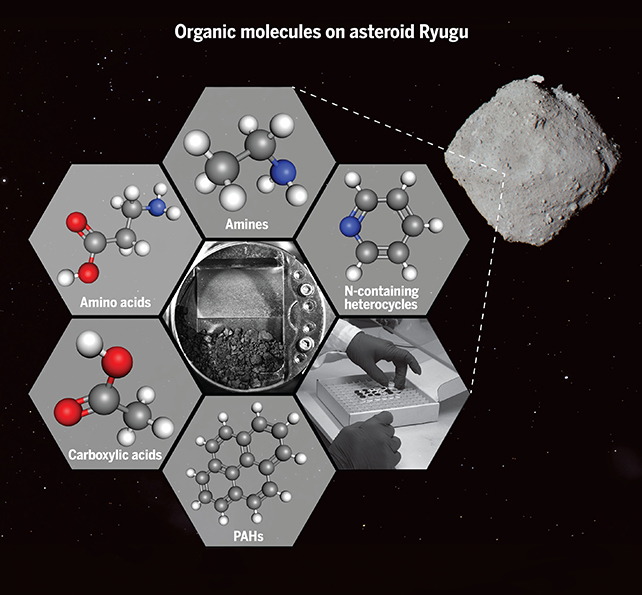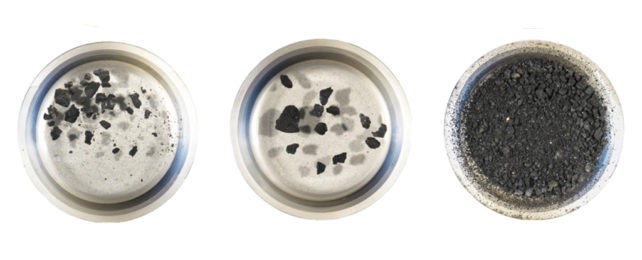Ongoing efforts to deconstruct the chemistry of the most pristine asteroid sample ever to grace a laboratory has now revealed a trove of organic molecules, lending evidence to theories that suggest biology has its roots ultimately in space.
It's been more than two years since material from the surface of the asteroid Ryugu was transported to Earth in an air-tight capsule. Since then, researchers from around the world have worked together to study its composition in order to better understand how it fits in with the evolution of our Solar System.
These latest results confirm links between the carbon-based compounds found on stony 'chondrite' meteorites that have crashed to Earth's surface, and the chemistry of the asteroids they came from.
By looking at the similarities and differences between the Ryugu samples and carbonaceous chondrite meteorites on Earth, scientists can take a fresh look at meteorites in our collections. In other words, actual asteroid samples are useful in confirming hypotheses made from the bits of them arrive on our planet's surface after a brief baking through the atmosphere.
"Previous analyses have revealed organic molecules within carbonaceous chondrites, but until now, we haven't been able to see whether or not these primitive projectiles differ from what's found on asteroids," says cosmochemist Larry Nittler, formerly from the Carnegie Institution of Washington and now with Arizona State University.
"Our work on the Ryugu samples provides the first direct link between the organic material found in chondrites and that from asteroids."
Often called the building blocks of life because of the role they play in sparking life into existence, the newly identified molecules include several types of amino acids that combine to make the proteins that organisms rely on to exist.
In total, around 20,000 organic molecules were identified in just 5 grams (0.18 ounces) of material. These include organic compounds such as carboxylic acids, amines, and aromatic hydrocarbons; compounds that are closely related to a wide variety of molecules critical throughout the living world.
The findings support the idea that ingredients necessary for the generation of life came to our planet in an already complex form through collisions with asteroids. Just how this organic dust may have combined into some kind of replicating chemistry remains an area of debate, but knowing space provides the right conditions for the genesis of so many relevant compounds gives scientists a good start for experimentation.
As these asteroids are essentially the leftovers from when the Solar System formed some 4.5 billion years ago, they can also teach us a lot about the earliest moments of our planet's creation.

Through certain chemical markers – including the amount of water present – scientists can attempt to identify when and where Ryugu was formed, giving us a snapshot of conditions at a certain point in the development of the Solar System.
"At least some of the organic matter in Ryugu samples predates the Sun's formation and was formed in extremely cold conditions," says geochemist George Cody, from the Carnegie Institution for Science in Washington, DC.
These new studies show the benefit of probes that collect material from asteroids, like the Hayabusa2 craft that extracted rock from Ryugu. Unlike meteorite samples, this dust and rock has not been affected by any weathering as it sits exposed to the soil, water, and air.
What's more, trying to analyze an asteroid up in space is tricky as well – not least as they're moving so fast and reflect little light, limiting the readings that instruments can get. In the lab, much more time and attention can be given to extracting data from these materials.
"In the past, our research has been limited to studying space rocks that came to us by crashing on Earth," says Cody.
"With Hayabusa2, we were finally able to go out to a carbon-rich asteroid and see how it compares to the meteorites that reach Earth."
The two papers have been published in Science. They can be found here and here.
